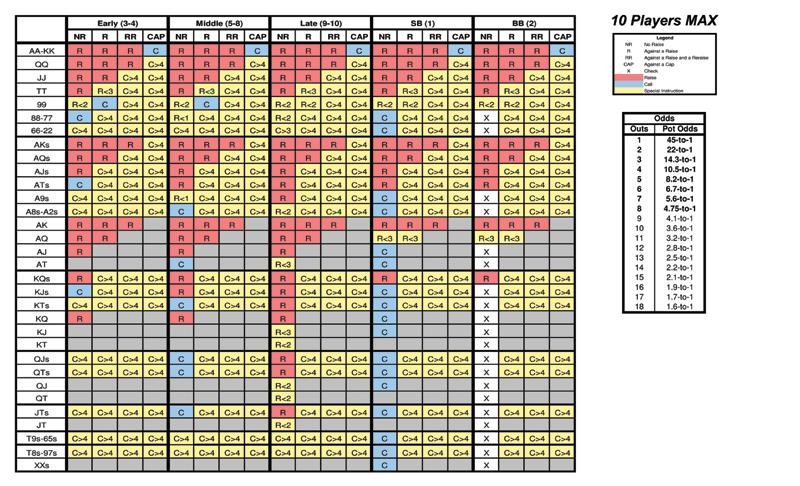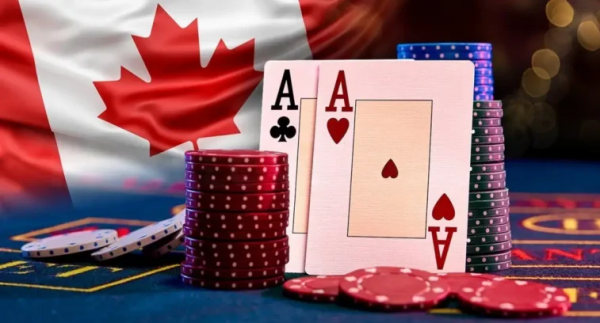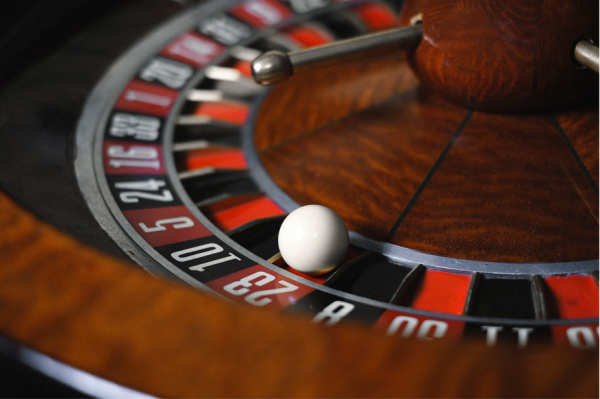I dare say that anyone who has played some hold’em is quite aware of what is meant by “outs.” But not many realize that there are two types of outs. Very simply, with a drawing hand – one that must improve to win the pot – outs are the unseen cards, presumably remaining in the stub of the deck, that will make your hand. For example, on the flop, you have four cards, all of the same suit. There remain nine more unseen cards of that suit; you have 9 outs. And there is a reasonable chance that you may catch one of them on the turn or on the river. If you are so inclined, you can convert that information to the card odds against making your flush. Or, you can glance at a handy chart that shows the card odds for different numbers of outs. In this case, the card odds are less than 2-to- 1 against you. More than one out of three times, you can expect to make your flush.)

Read more about George “The Engineer” Epstein and his poker books
Two Types of Outs
“Good” outs are the best; but, there can also be “bad” outs. Years ago, my poker buddy, Byron Ziman, labelled these “tainted” outs. Good thinking. That’s a card that will improve your hand, but also will improve an opponent’s hand even more so.
Let’s illustrate tainted outs with a rather common occurrence: From a middle position, you are dealt 10-9 offsuit, and pay to see the flop along with three other players. Your hole cards readily satisfy the Hold’em Algorithm criteria for starting-hands in any position. (See reference.)
The flop shows Q-J- 5 rainbow. You now have four cards in sequence to a very nice straight. Any King or any 8 gives you a straight – almost certain to take the pot on the showdown. You have 8 outs. That gives you a good chance to connect with a straight. But, what you don’t know is that an opponent was dealt A-10 in the hole (unfortunately for you). So, at this point, after the flop, he holds 10-J- Q-A, a draw to an inside Ace-high straight.
The turn is a King, one of your eight outs. You concentrate on keeping a poker face as you observe the board and glance at your hole cards to reassure yourself. No tells from you. Yes, you have made a King-high straight. An early-position player opens the betting. You raise to build the pot you fully expect to win. The Button calls your raised bet. Then the early-position re-raises! You stop to ponder: What could he be raising with? Being an optimist, you put him on a set of Kings, and call his re-raise. The river is a blank. The early-position quickly bets out; you call.
Showdown: The King on the turn gave him an Ace-high straight. Your hand is a poor second-best. You are so disappointed to lose that very nice pot. But, that’s poker. . .
True, the King was one of your outs – as it was for your opponent. But, for you, it was a tainted out. It gave both of you a straight, but his was higher than yours. It happens to the best of us.
The curse of having too many outs strikes again. I think I had all of them except board pairs for at least half the pot. #poker #Omaha8
— one out twice (@oneouttwice) October 7, 2015
* Reference: Hold’em or Fold’em? – An Algorithm for Making the Key Decision; by George “The Engineer” Epstein; published 2012 by T/C Press; contact: [email protected].







Comments